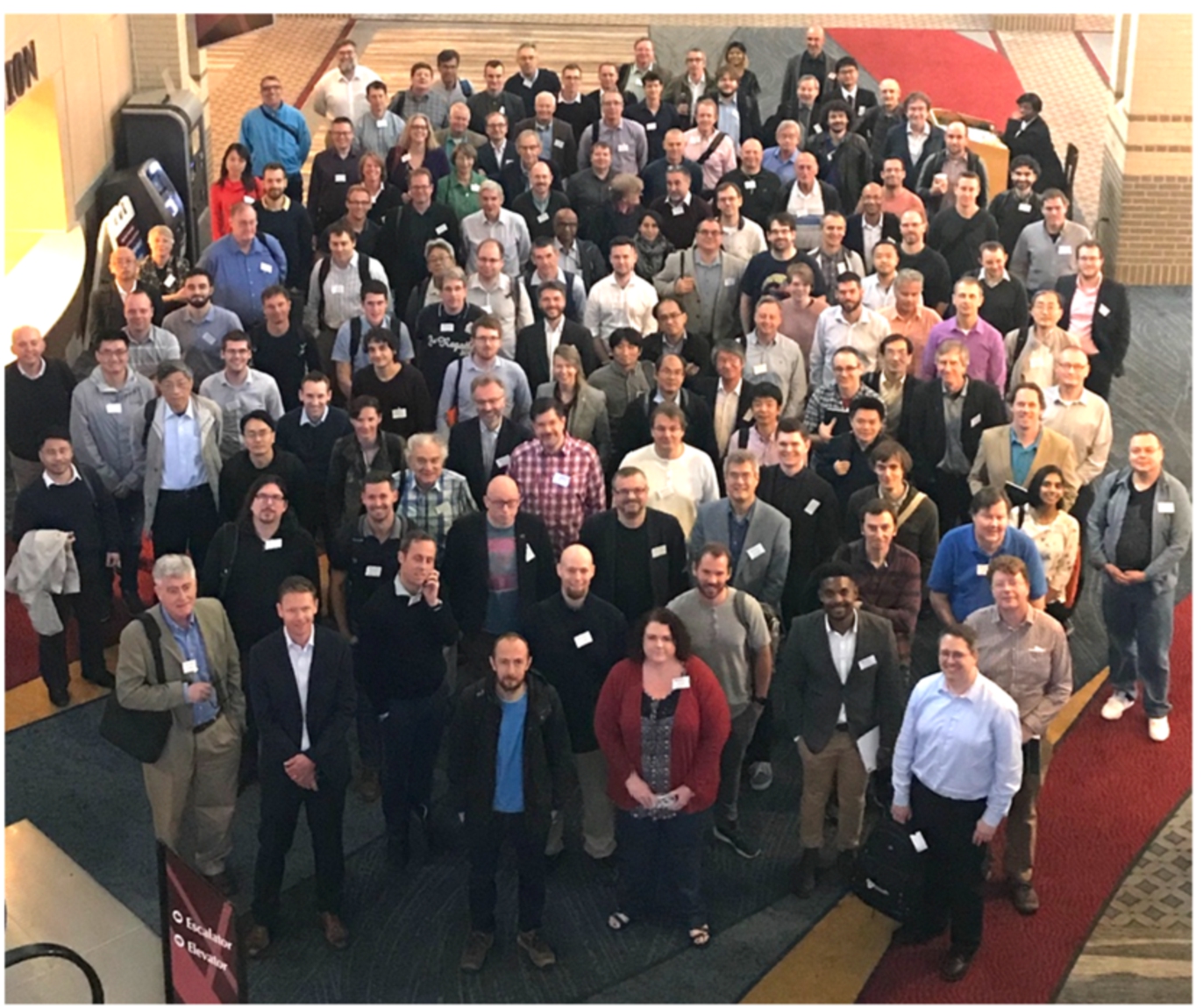23rd Meeting of the International Collaboration on Advanced Neutron Sources Organized by the Neutron Sciences Directorate at the Oak Ridge National Laboratory (ORNL) Chattanooga Convention Center, Chattanooga, TN (USA) 13–18 October 2019
Co-editors’ names for these proceedings (and members of local organizing committee):
Local organizing committee:
Sarah Cousineau (Research Accelerator Division, ORNL)
Georg Ehlers (Neutron Technologies Division, ORNL)
Garrett E. Granroth (Neutron Scattering Division, ORNL)
Lacy L. Jones (Neutron Technologies Division, ORNL)
Bernard W. Riemer (SNS Upgrades Office, ORNL)
ICANS XXIII was hosted by the Oak Ridge National Laboratory Neutron Sciences Directorate and took place at the Chattanooga Convention Center in Chattanooga, TN from the 13th to the 18th of October 2019. This was the first time that ORNL hosted the meeting. The workshop was attended by 163 participants from 24 institutions. The conference began with an evening reception and featured a mid-week collaboration dinner. In addition to attending the full program schedule, participants had the opportunity to spend an afternoon exploring downtown Chattanooga. Figure 1 shows a conference photo, of most of the participants, taken inside the convention center.
Fig. 1.
ICANS XXIII participants.

The workshop program was assembled by 5 committees: Accelerator, chaired by Stephen Milton (Los Alamos National Laboratory); Target and Moderator, chaired by Günter Muhrer (European Spallation Source); Software, chaired by Jon Taylor (ISIS Neutron and Muon Source); Instruments, chaired by Christian Rüegg, Paul Scherrer Institute; and Safety and Operations, chaired by Ralf Trant (European Spallation Source). Consistent with the philosophy of a workshop, the program featured time allocated for collaborative discussions at the end of each breakout session, during the highly interactive poster sessions, and during on site meals and coffee breaks. The program plenary sessions featured 14 presentations that included status updates from the major spallation neutron sources. A highlight was to learn of the progress achieved at the newest facility of this type, the China Spallation Neutron Source, operating with first beam on target since November 2017 and with its first user paper published in April 2018.
Twenty-four breakout sessions included 105 individual presentations. The three poster sessions featured 48 posters and many participants took advantage of the opportunities for individual discussions as illustrated in Fig. 2. Summary presentations were delivered during the plenary sessions on the final day of the workshop and made the following selected points:
Software sessions
∗ Facilities are all moving to systems supporting live data processing.
∗ Recording of individual neutron events (event mode) is being used everywhere.
∗ There are concerns about key software becoming unmaintained or unsupported.
∗ Machine learning/deep learning methods could provide significant impact.
Targets and Moderators sessions
∗ Emphasis in this area has shifted from neutronics in previous ICANS workshops to engineering aspects in this one and “protecting and increasing the return on investment” with many examples of approaches to address operational issues.
∗ Horizons for neutronics include VCN sources, high-power UCN sources, keV sources, and detailed modeling to reduce instrument backgrounds. Improved variance reduction methods and advancement of modern scattering kernels are needed to address these opportunities.
Operations and Safety sessions
∗ Discussion periods addressed several topical areas common to both established and new facilities including the regulatory landscape, reuse of spares, establishing the provenance of legacy waste, challenges associated with major upgrades of existing sources and the requirement to manage large volumes of waste materials in a short time, and finally the differences between machine interlocks designed to protect equipment and systems designed to protect workers and the public.
Instruments sessions
∗ Polarization analysis is becoming more routine and wide angular ranges and large solid angles can now be covered.
∗ Technology advances in high pressure using diamond anvil cells are increasing the maximum pressure that can be accessed for neutron scattering experiments. Split-coil magnets based on high temperature superconductor tape have the potential in the near term to achieve fields greater than 20 T for neutron scattering applications.
∗ New instrument designs are enabling collection of more “neutrons of interest” through multiplexing methods with examples being CAMEA, BIFROST and CANDOR
∗ Advances in scintillator and boron-10 based detectors are on-going but the full potential of some future instrument projects including reflectometers and imaging instruments won’t be realized without further improvements and better detectors.
Fig. 2.
Participants enjoying informal discussions at one of the poster sessions.

The workshop concluded with an opportunity to tour the Spallation Neutron Source at ORNL. Finally, the next ICANS workshop will be hosted by the China Spallation Neutron Source, tentatively in late 2021.
In Memorium – John M. (Jack) Carpenter (1935–2020)
In 1977, Jack Carpenter, along with colleagues Rex Fluharty, Leo Hobbis, Motoharu Kimura, and George Stirling, started the International Collaboration on Advanced Neutron Sources – ICANS. The twenty three ICANS meetings have generated nearly twenty thousand pages documenting best practices, successes, and blind alleys in the development of accelerator-based neutron sources, neutron scattering instrumentation, and user facility operation. Jack’s insistence that ICANS be a working meeting, devoted to building collaborations, answering questions, and solving problems, has helped to create a community where personal relationships and cooperative efforts advance neutron source technology and scientific applications. Unfortunately, Jack was unable to attend this ICANS workshop so Fig. 3 shows Jack participating in the previous workshop, ICANS XXII. His many friends and colleagues will miss his insight and leadership.
Fig. 3.
Jack Carpenter at the previous ICANS meeting held in Oxford.

Notes
1 Notice of copyright. This manuscript has been authored by UT-Battelle, LLC under Contract No. DE-AC05-00OR22725 with the U.S. Department of Energy. The United States Government retains and the publisher, by accepting the article for publication, acknowledges that the United States Government retains a non-exclusive, paid-up, irrevocable, world-wide license to publish or reproduce the published form of this manuscript, or allow others to do so, for United States Government purposes. The Department of Energy will provide public access to these results of federally sponsored research in accordance with the DOE Public Access Plan (http://energy.gov/downloads/doe-public-access-plan).




